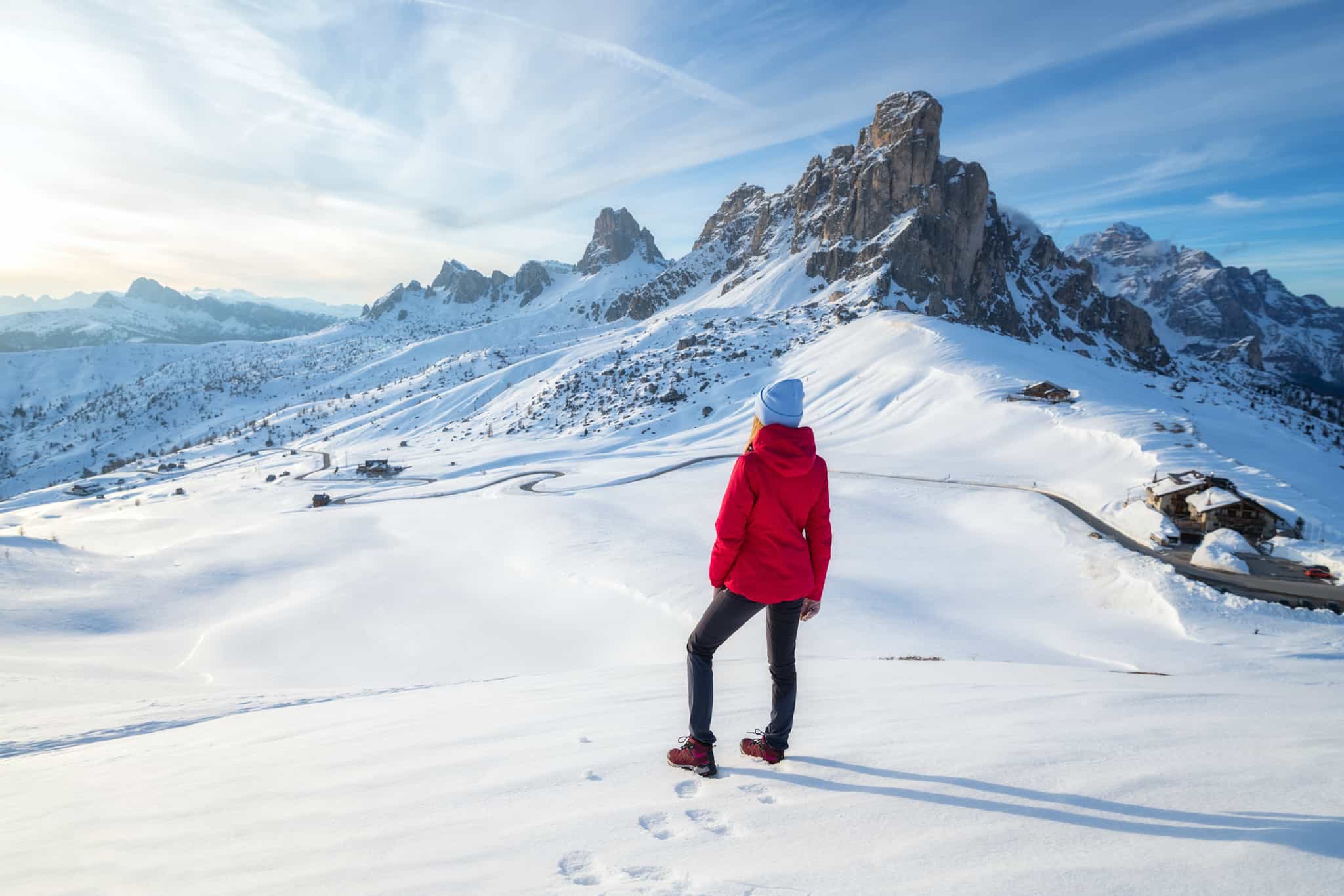
Winter Hiking in the Italian Dolomites
Experience the magic of winter in the UNESCO-listed Dolomites with a series of unforgettable hikes amongst majestic mountain ridges
What's Included?
Activities & Certified Guides
All itinerary activities with an expert, local, English-speaking Alpine guideAccommodation
4 nights in a comfortable 4-star hotel with a wellness centreMeals
All breakfasts and 4 dinnersTransfers
Set airport transfers and everything in betweenEquipment
Snowshoes and/or flexible-crampons/microspikes, trekking poles and avalanche safety equipment - transceiver, shovel and probeSmall Like-minded Groups
Solo-friendly by design, join our small n’ sociable groups of up to 10 like-minded, active and outdoorsy people…
…
What's it like?

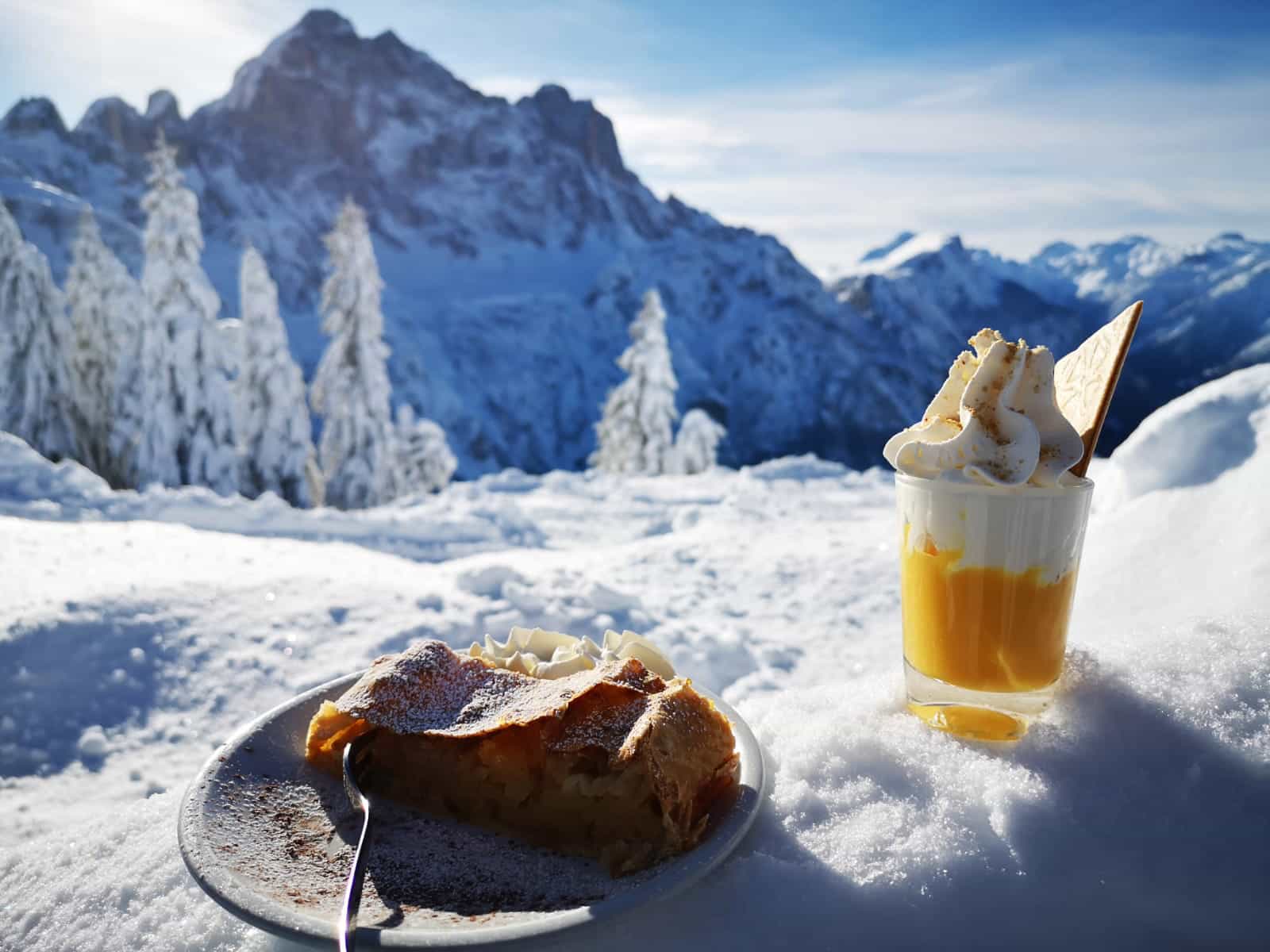
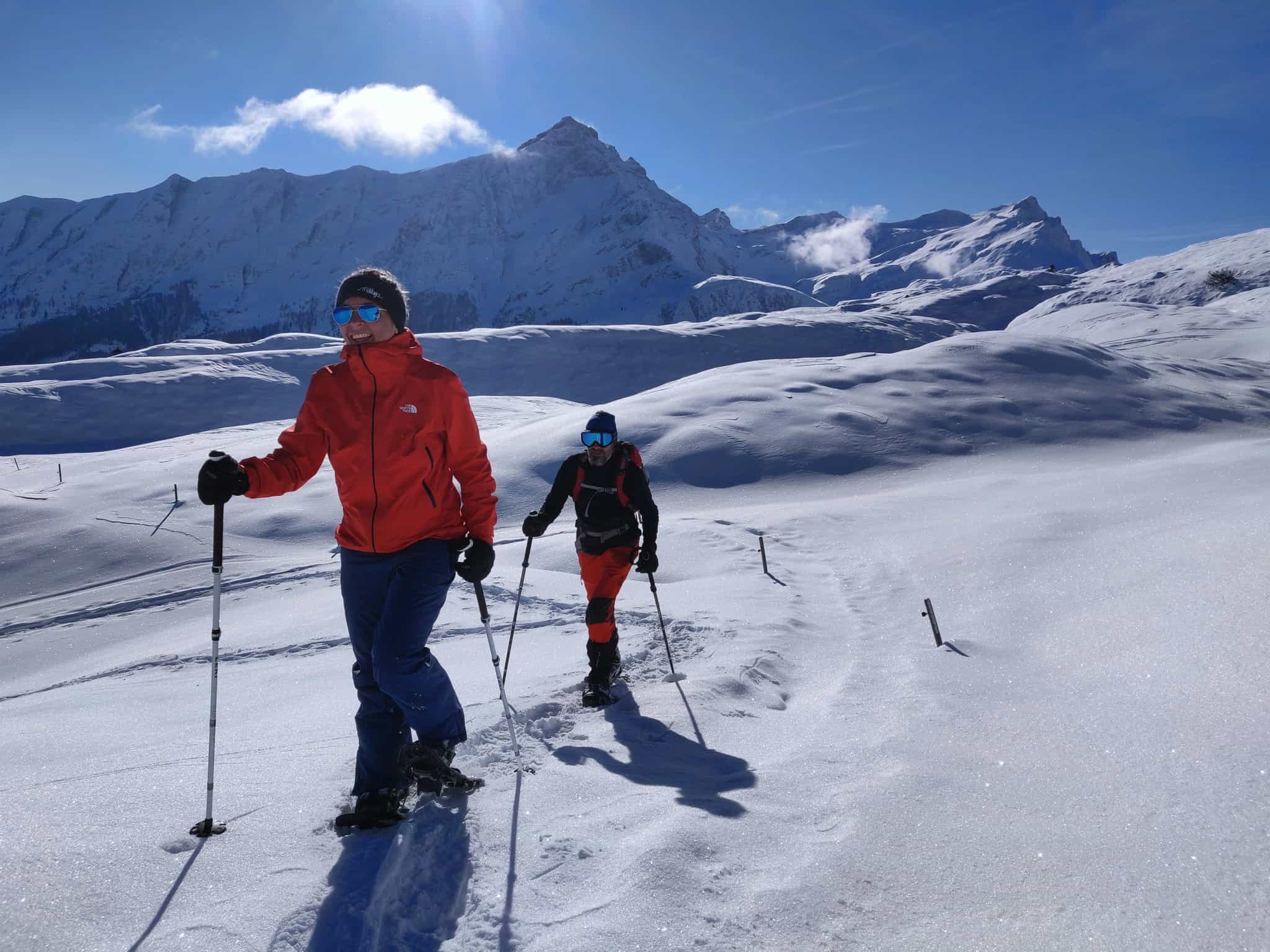
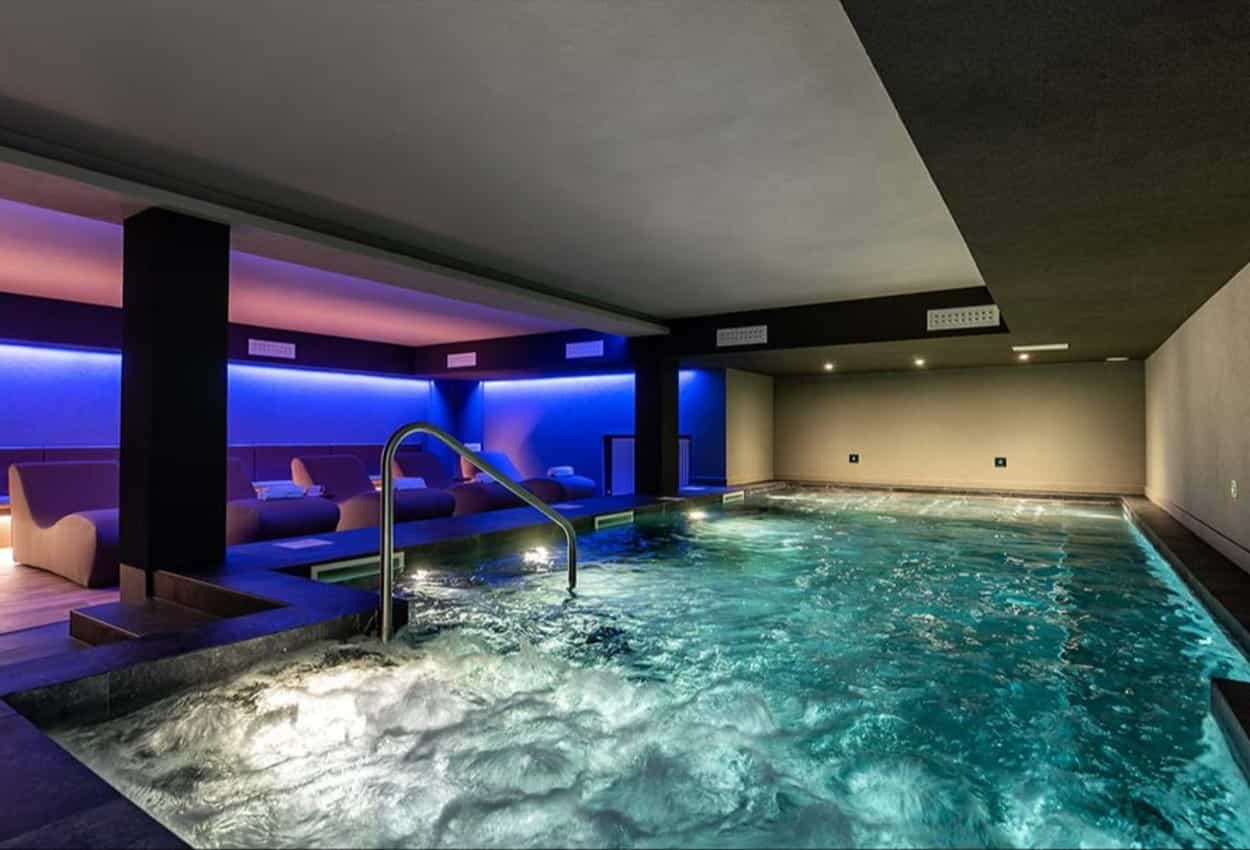
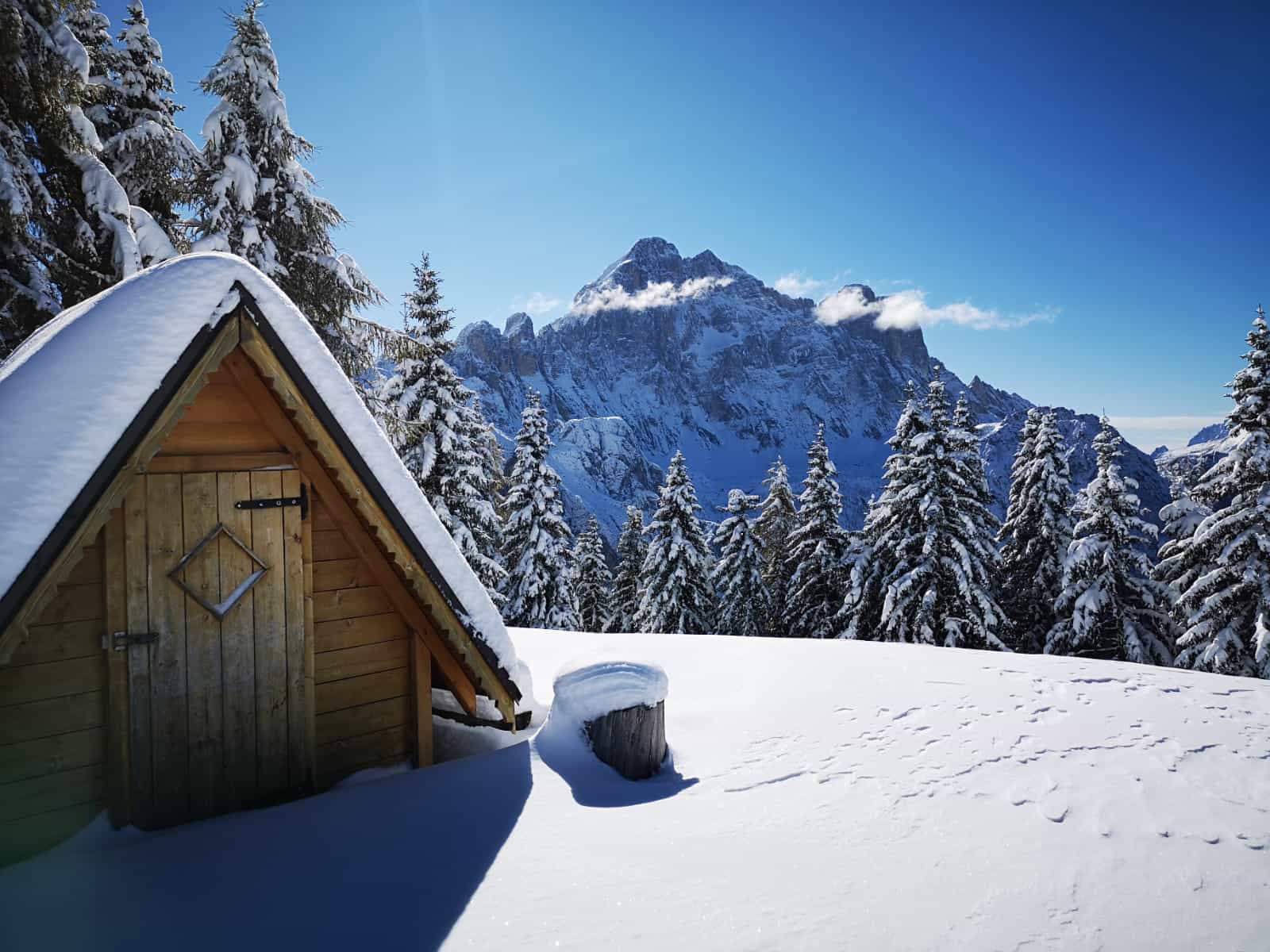
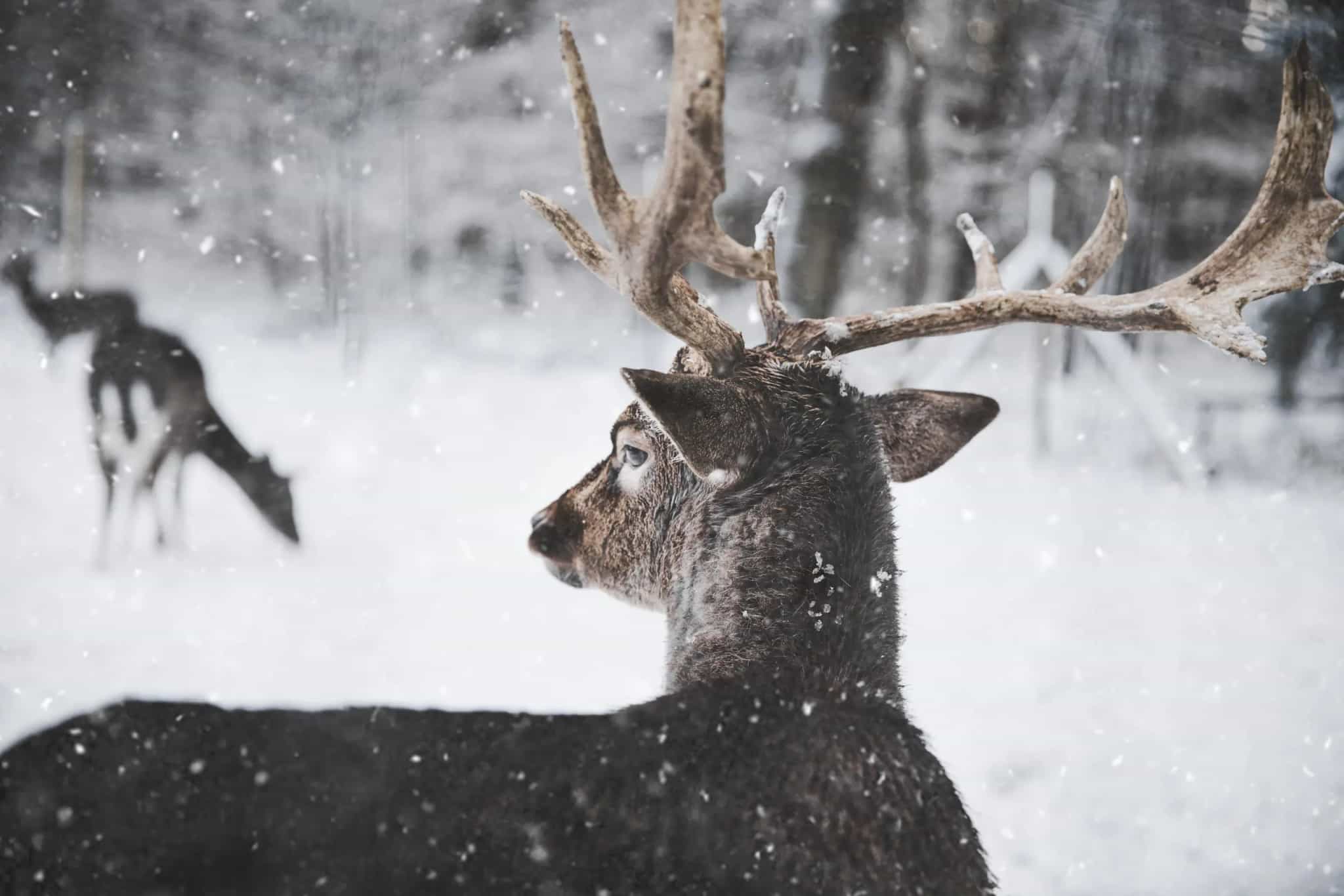
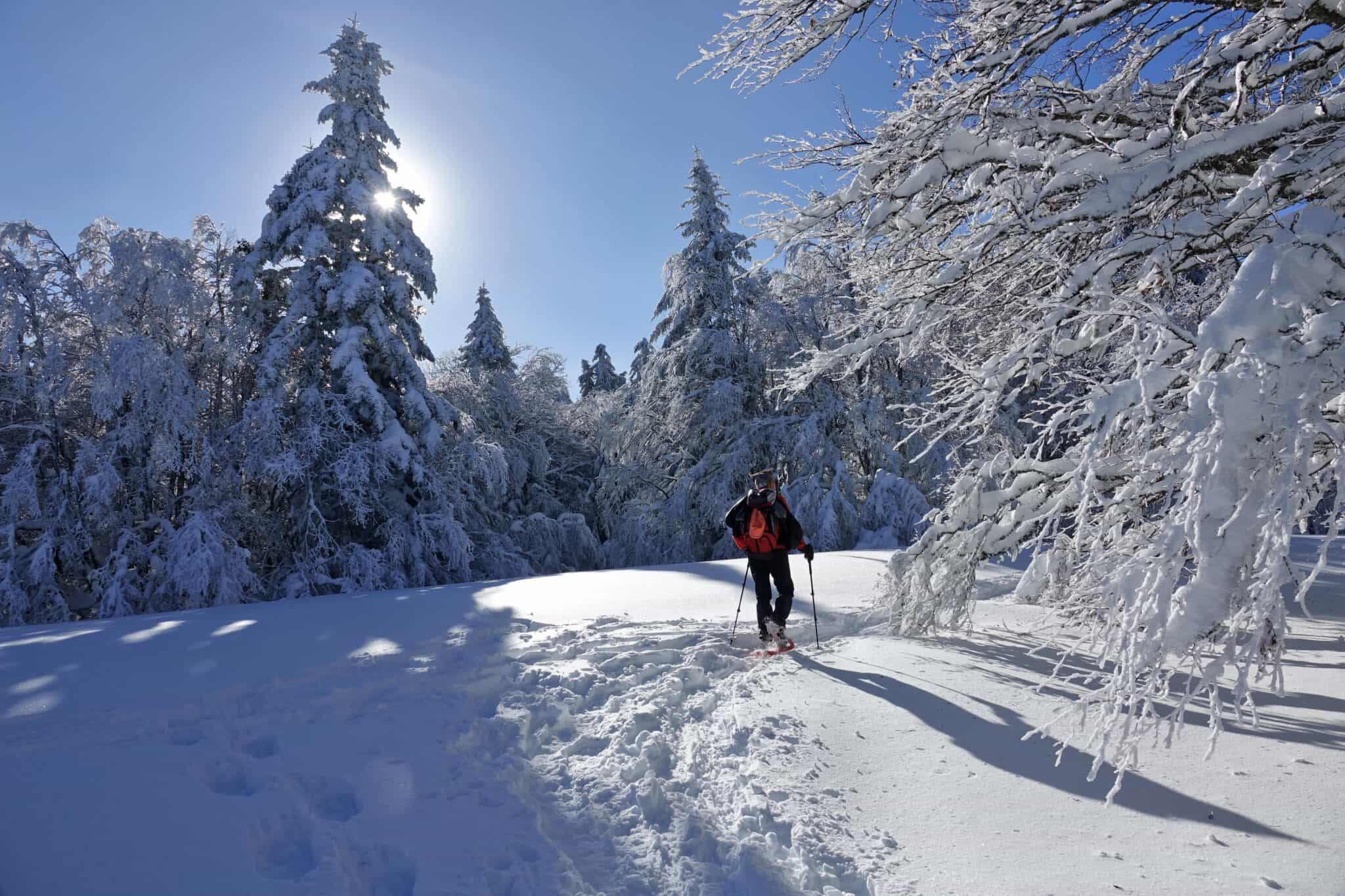
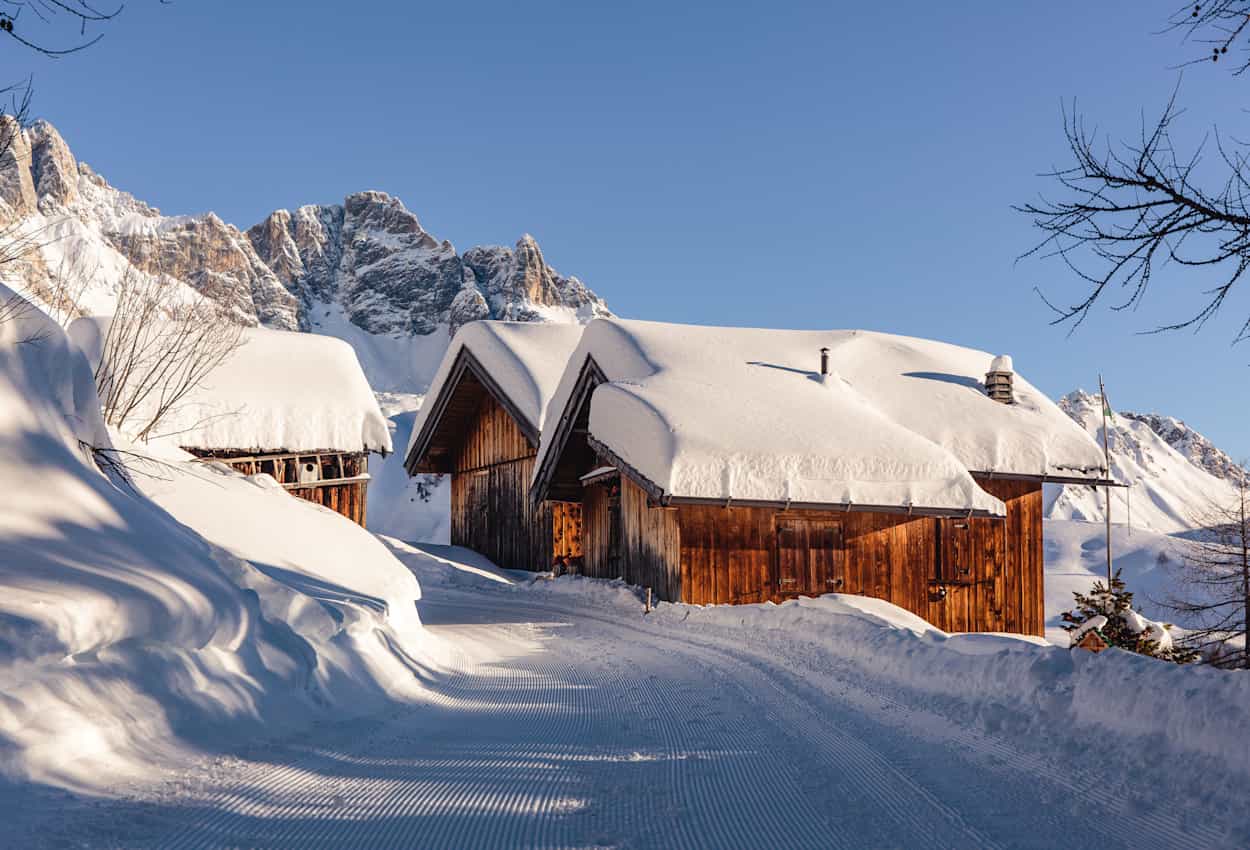
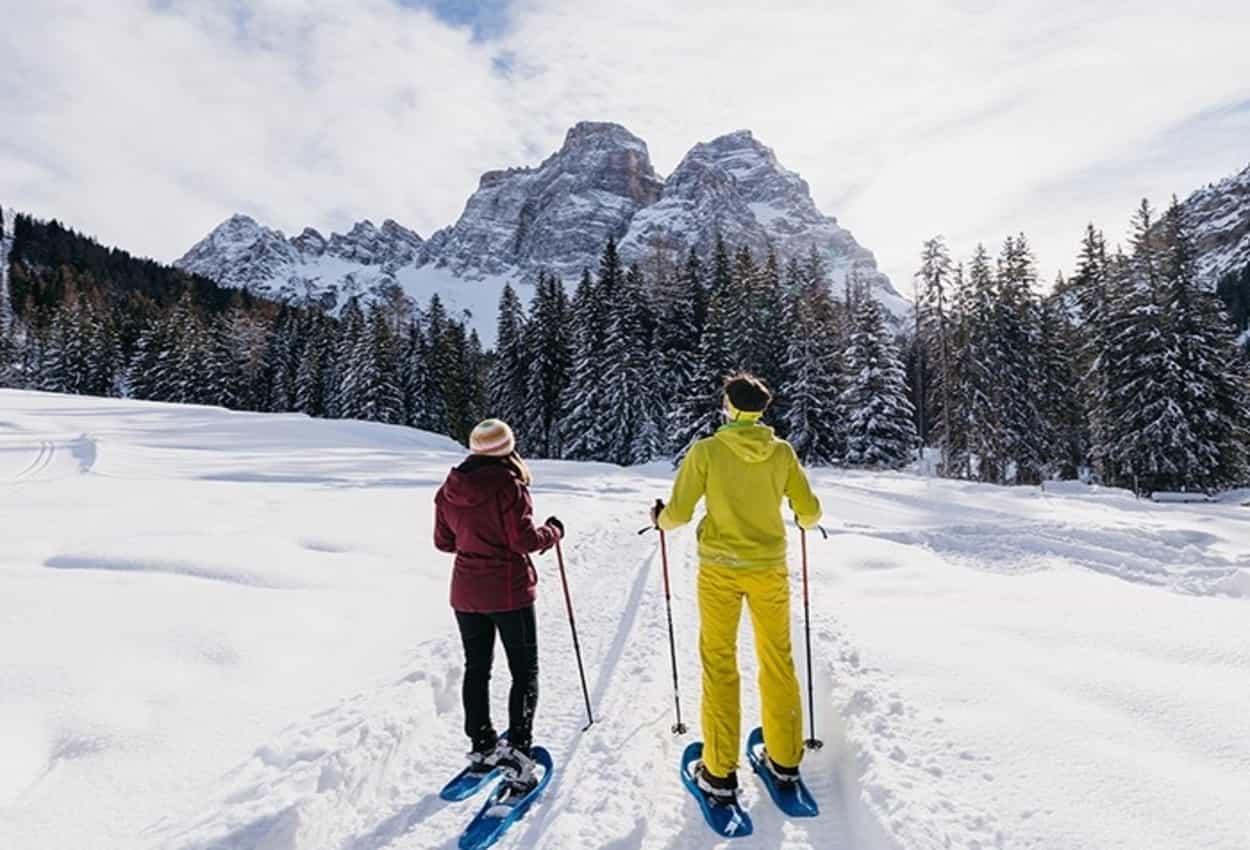
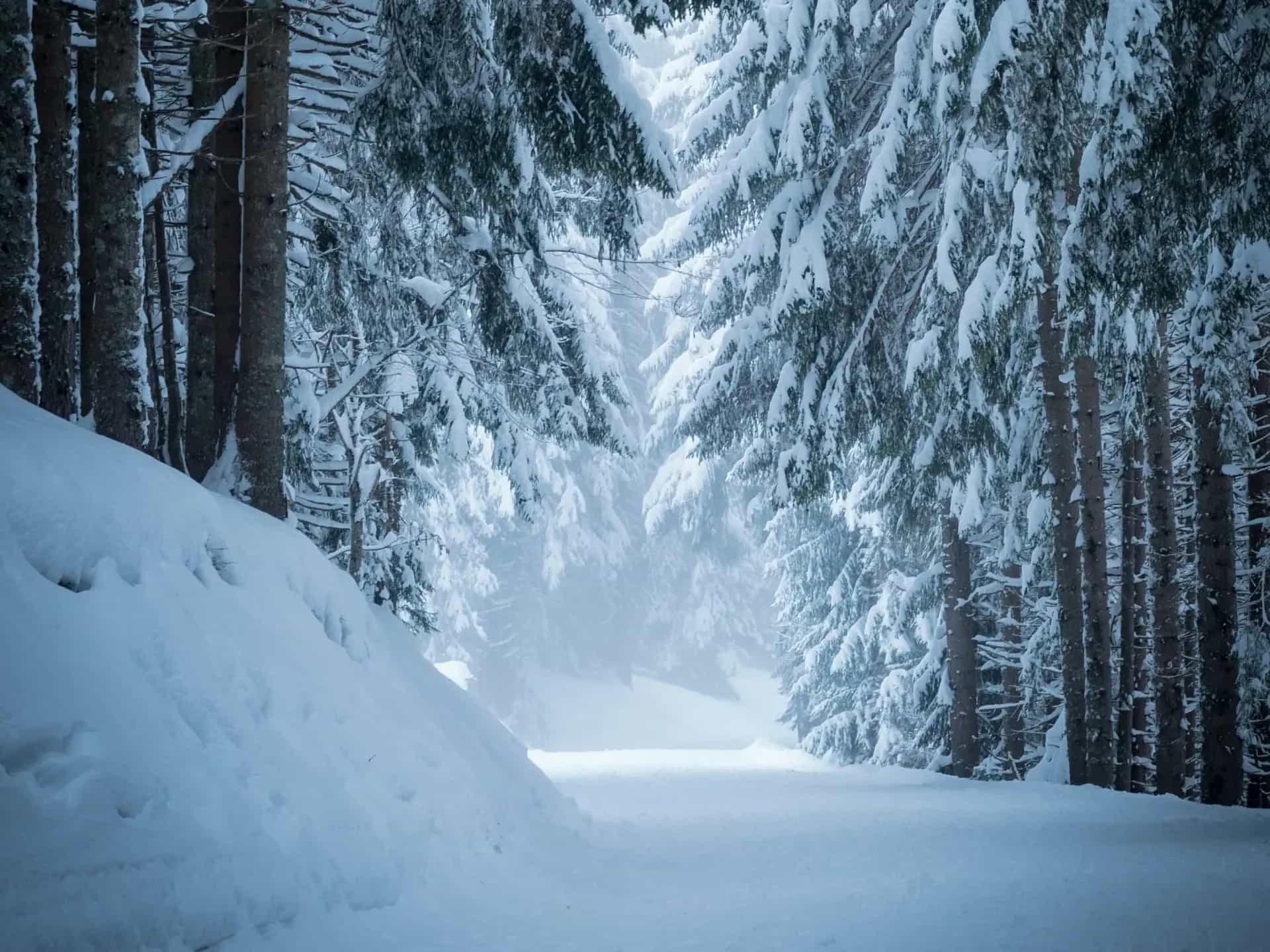
Snowshoe to the iconic Rifugio Belvedere (2082m), perched beneath Monte Fertazza, with breathtaking views of Monte Civetta and Monte Pelmo
Trek through the serene forests of Andraz and ascend to the panoramic Passo Sief (2209m), surrounded by majestic peaks like Monte Sief and Col di Lana
Stomp the ridgeline of Passo Giau, one of the most photographed vistas in the Dolomites, with views of Marmolada, Gran Vernel, and the Pordoi-Sella group
Unwind at Hotel Orso Grigio, a 4-star alpine retreat with traditional hospitality, mountain views, and a relaxing wellness centre
Key Information
Day 1
To the Dolomites!
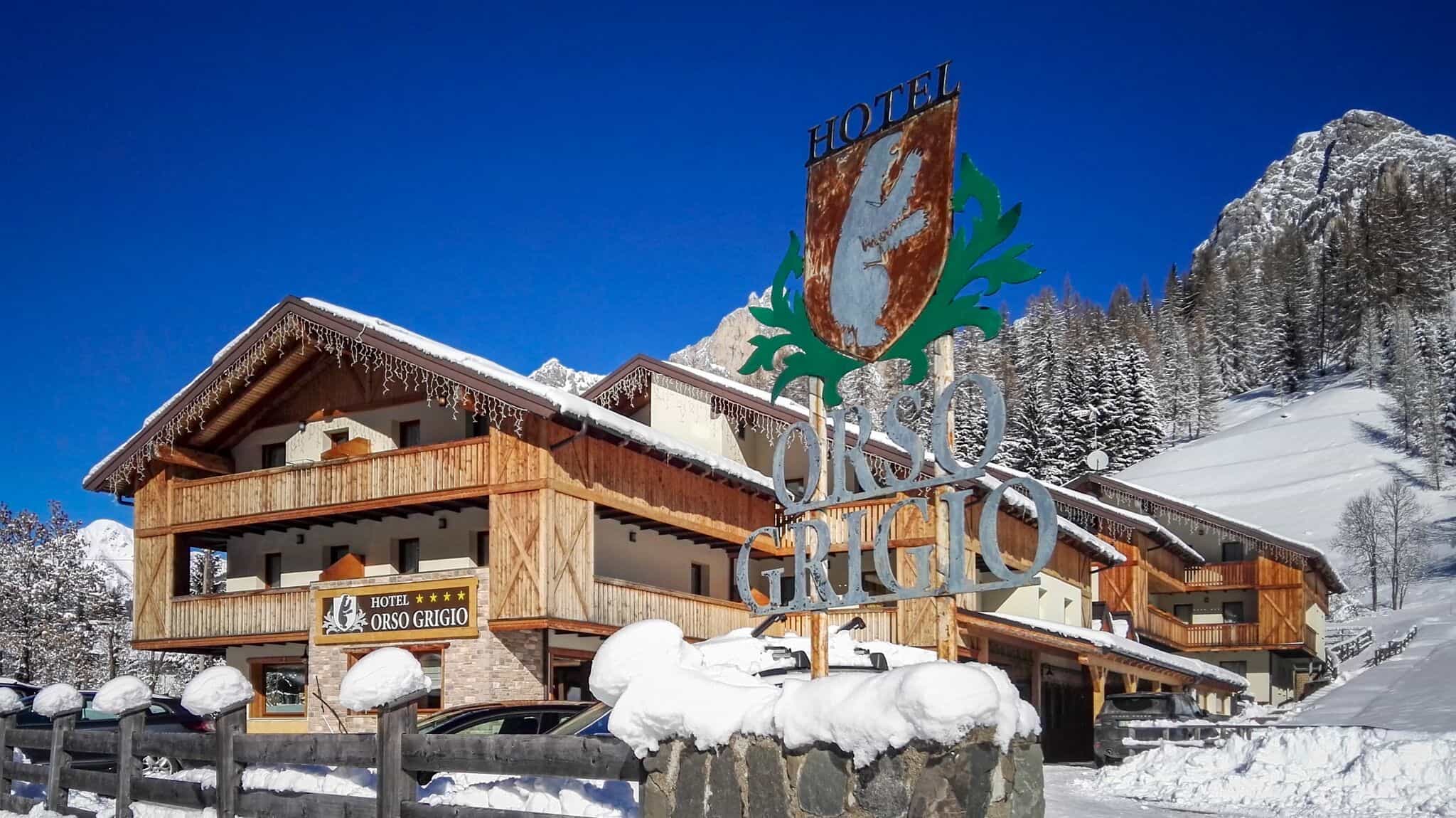
Driving
Meet your host at Venice Airport and transfer to the peaceful mountain village of Pescul, tucked away in the heart of the Dolomites. For the next four nights, you’ll be based at Hotel Orso Grigio, a charming 4-star alpine retreat that blends comfort, tradition and warm hospitality. After checking in, enjoy a welcome drink and take some time to settle into your surroundings. If time allows, you can unwind in the hotel’s cosy wellness centre before gathering for a delicious welcome dinner with your fellow adventurers. Set in the lesser-known Val Fiorentina, your tranquil base boasts uninterrupted views of Monte Pelmo and Civetta, the perfect backdrop for a serene and scenic start to your Dolomites escape. Your expert alpine guide will meet you the following morning to walk you through the plan for the days ahead, before you head out on your first winter hike.
Day 2
To Rifugio Belvedere (2082m) via Val Fiorentina’s alpine trails

Snowshoeing
After a nourishing breakfast, step straight out from Hotel Orso Grigio and begin your hike to Rifugio Belvedere (2082m), perched just below the summit of Monte Fertazza. Today’s trail leads you through the quiet beauty of Val Fiorentina, with a rewarding mix of snowy forest trails and wide alpine pastures underfoot. You’ll start on a gentle silvo-pastoral path through serene larch woods, following a well-marked route that winds gradually uphill to the Fertazza mountain hut at 1839m - a perfect spot for a short rest. From here, the trail opens out into sweeping meadows dotted with old wooden huts, before the final climb up to Rifugio Belvedere. Enjoy a fuel-filled lunch with time to soak in the extraordinary views: the northwest face of Monte Civetta looms dramatically ahead, with Monte Pelmo to its left, and the Sella, Marmolada, Averau and Cernera groups visible on clear days. Next, descend back down to the hotel, arriving by mid-afternoon with time to unwind in the hotel’s cosy wellness centre, complete with Turkish bath, saunas and mountain views before you head for dinner. This evening your guide will join the group for dinner so you can all get to know each other better.
**For those seeking a lighter day, the chairlifts offer an alternative route up or down (payable locally), allowing you to tailor the adventure to your energy levels.
Day 3
To Passo Sief (2209m) via the snowy forests of Andraz
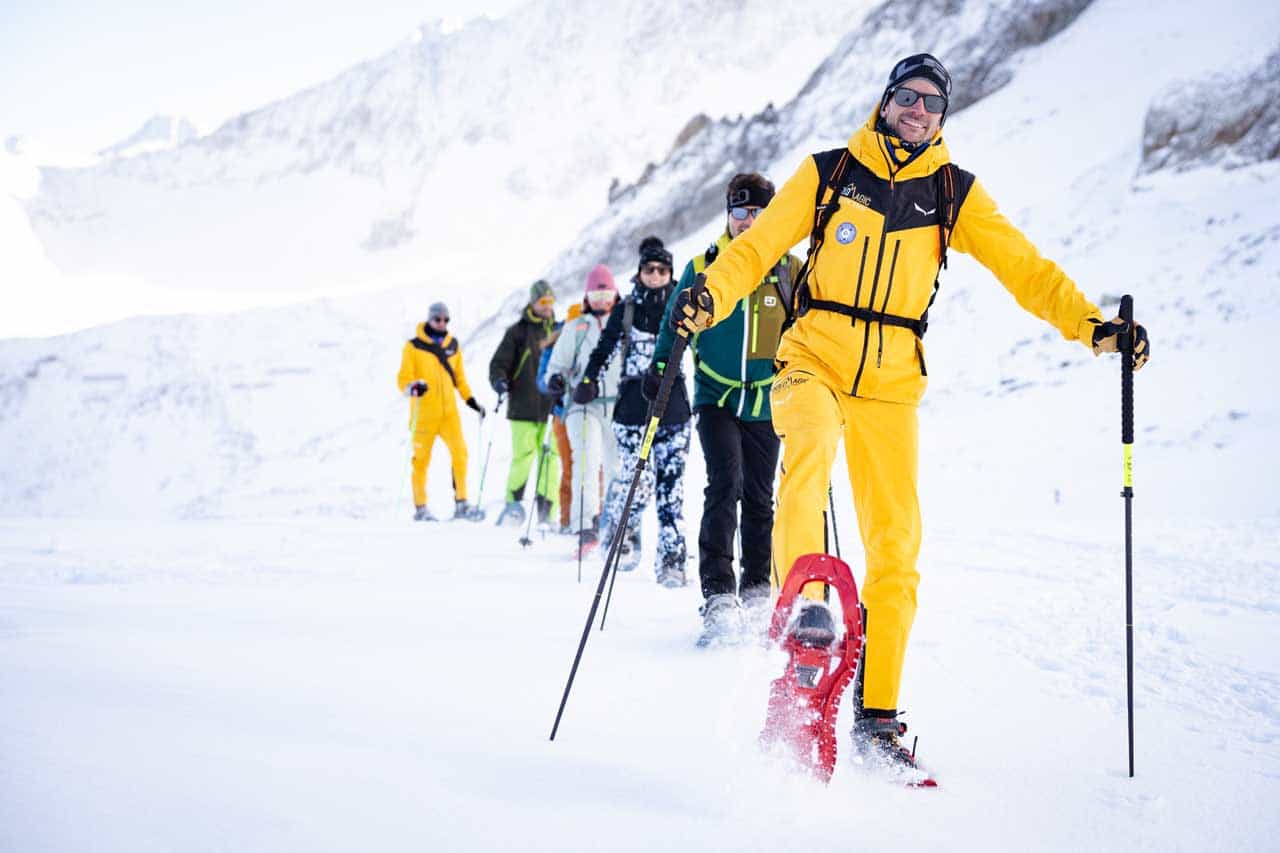
Snowshoeing
After breakfast, enjoy a short transfer from Hotel Orso Grigio to the quiet hamlet of Livinallongo del Col di Lana, where your snowshoe adventure begins. Today’s route winds through the serene, snow-covered forests of Andraz, offering a peaceful and remote escape from the busier ski resorts. You’ll start on a well-packed trail leading towards the medieval Castello di Andraz – an evocative fortress tucked deep in the woods. From there, strap on your snowshoes and begin a steady climb along an old military mule track, gradually ascending through whisper-quiet woodland. As the trees start to thin, the landscape opens into the breathtaking Federe Basin, a wide, snow-blanketed valley encircled by dramatic peaks. Here, the trail becomes more challenging, with untracked snow and few markers guiding the way. Led by your experienced alpine guide, you’ll pass scattered mountain huts as you ascend towards Passo Sief (2209m), a vast panoramic saddle nestled between Monte Sief and Col di Lana. If conditions permit, your guide may lead a further ascent along the ridge to capture even more sweeping views. Otherwise, you’ll retrace your path, descending through the hushed beauty of the forest. With no huts or restaurants along the way, a delicious packed lunch will be purchased before setting off. Expect to return to the hotel by mid-afternoon, just in time to relax in the wellness centre before settling in for another cosy evening in the heart of the Dolomites.
Day 4
An epic high-mountain loop in Valfredda and Fuciade
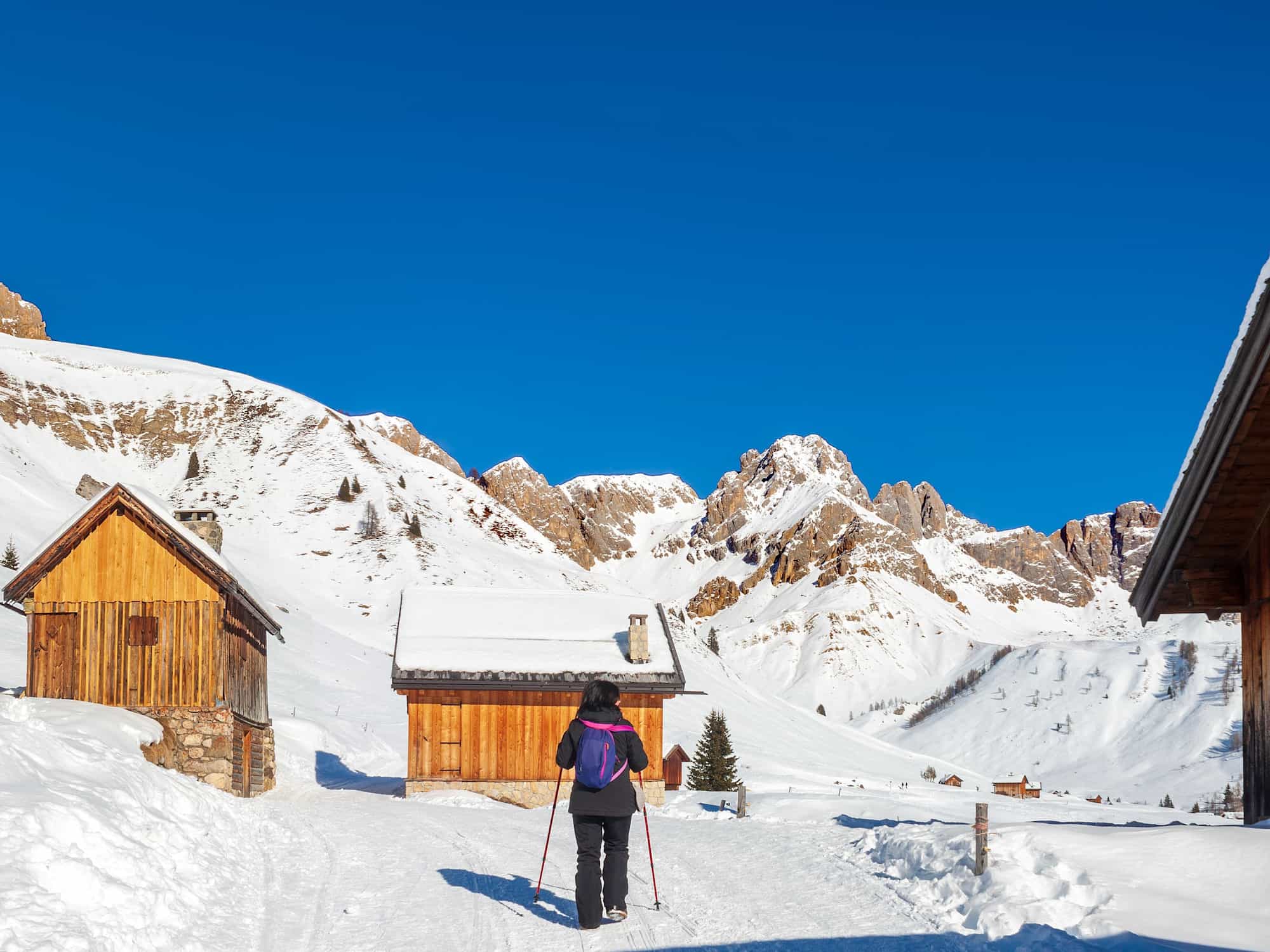
Snowshoeing
After breakfast, drive for 45 minutes to Col de Mèz and begin your high-altitude loop to Forcella Forca Rossa (2490m), featuring expansive mountain views and a true sense of wilderness. Setting off from Col de Mèz, the trail climbs gently through quiet larch woods before opening out into wide alpine pastures, where the old Casoni di Valfredda huts sit quietly beneath the peaks. Crossing a small stream, the route ascends steadily through snowy meadows into a remote valley, where a wooden shrine marks the turn towards the upper ridge. As you climb higher, the landscape becomes wilder and more open, with scattered boulders guiding your way. The final push to Forcella Forca Rossa is steep but rewarding, offering spectacular views of the Pale di San Martino, San Lucano, Civetta, and Moiazza ranges stretching in every direction. With good visibility, you’ll feel completely immersed in the high Dolomites. After a break at the saddle, descend via a panoramic ridge to a gentle pass between Valfredda and Fuciade, where you’ll stop for a well-earned lunch. A mellow descent along a groomed trail then leads you back through the forest to your starting point.
Day 5
A final winter stomp to the beauty of Passo Giau
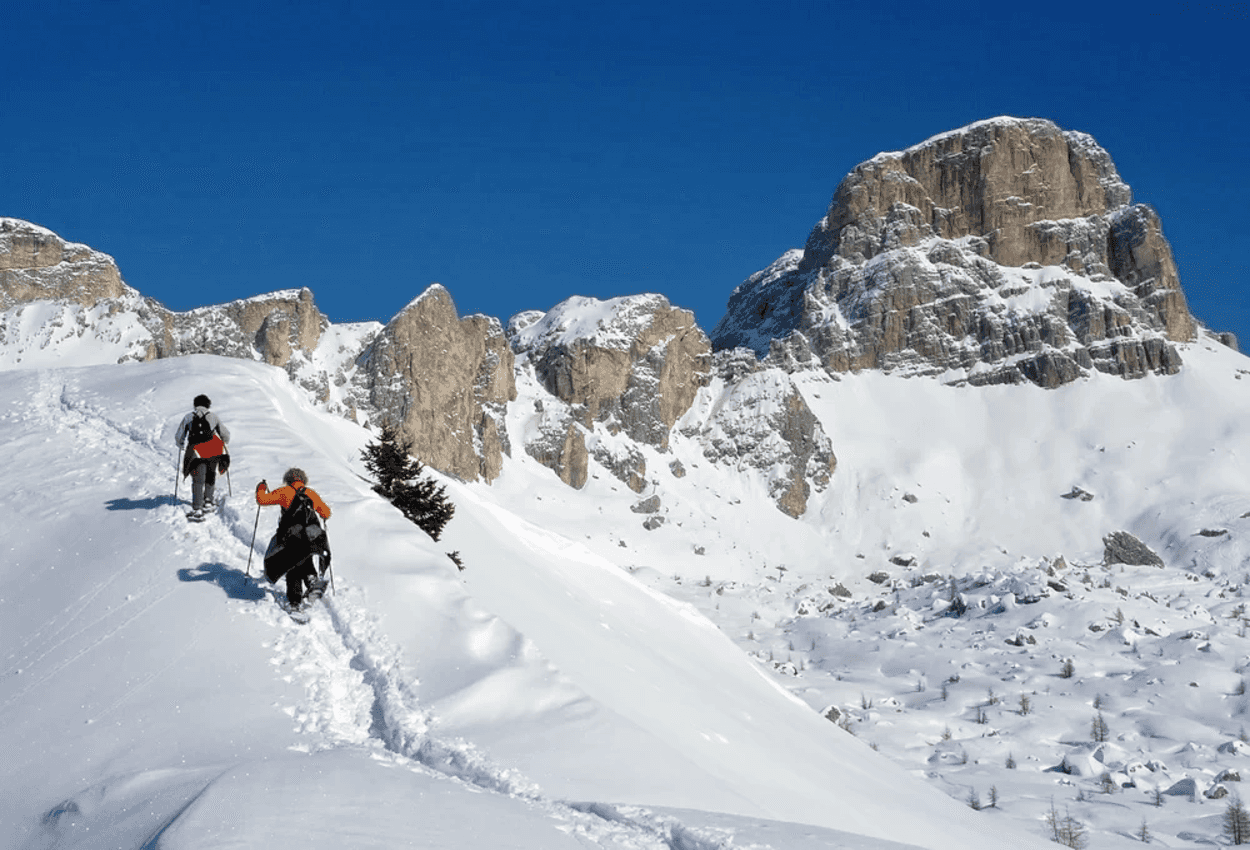
Snowshoeing
Driving
After a hearty breakfast, your final adventure begins with a short but rewarding snowshoe journey across one of the Dolomites’ most stunning ridgelines. Setting off from the Fedare area, you’ll follow a well-trodden path that winds beneath the mountains towering above Passo Giau, one of the most photographed vistas in the world. As you make your way westward, the trail offers sweeping views of some of the Dolomites’ most iconic peaks, including Marmolada, Gran Vernel, the Pordoi-Sella group, and many more. The route takes you steadily upwards, gaining gentle elevation as you reach the ridge. After soaking in the scenery, begin your descent along a well-marked trail that follows the edge of the valley, offering even more incredible views. Back at Rifugio Fedare, enjoy a final, delicious, hearty meal crafted from local ingredients before your host transfers you back to Venice Marco Polo Airport, where you are expected to arrive by 16:00 at the latest, in time to catch your flight home.
The Area
Logistics
Starts
Venice Airport
14:00 on Day 1
Ends
Venice Airport
16:00 on Day 5
Transfers
On Day 1, your driver will meet you at Venice Marco Polo Airport (at 14:00 at the latest; exact timings will be confirmed by your host prior to your trip, depending on the group's incoming flights). You'll be transferred to your first hotel in Pescul, which is approximately two hours away. On Day 5, your host will transfer you back to Venice Marco Polo Airport after your final winter hike, where you are expected to arrive by 16:00, so please don't book a flight departing before 18:00 that day.
Please note that alternative transfers between the airport and the Dolomites are very expensive, whilst connections by public transport are limited and often not available: we therefore recommend that in order to join the group transfer, you ensure you leave ample time between your flight arrival time and transfer departure time of 14:00. In case of significant delays, the best option is to contact your host who can provide you with a trusted taxi number – but please note, this will be an expensive option (approximately €300 for a one-way transfer to Selva di Cadore).
Travel options
Venice Marco Polo Airport is accessible via various direct flights from the UK and mainland Europe. Flights from the US generally connect through Madrid, London or Frankfurt.
For those who wish to avoid flying, Venezia Mestre is well connected with high-speed trains from London, via Paris. The journey will take an average of 21 hours and usually involves two changes.
Given the trip begins with an afternoon transfer from Venice Airport, you could perhaps consider arriving the day before and taking the opportunity to visit the beautiful, UNESCO-listed city of canals, art and romance. When visiting Venice, check first if you are required to pay the Venice Access Fee (applicable to some dates only).
Day 1
Breakfast
Lunch
Dinner
Day 2 – Day 4
Breakfast
Lunch
Dinner
Day 5
Breakfast
Lunch
Dinner
What is the food like?
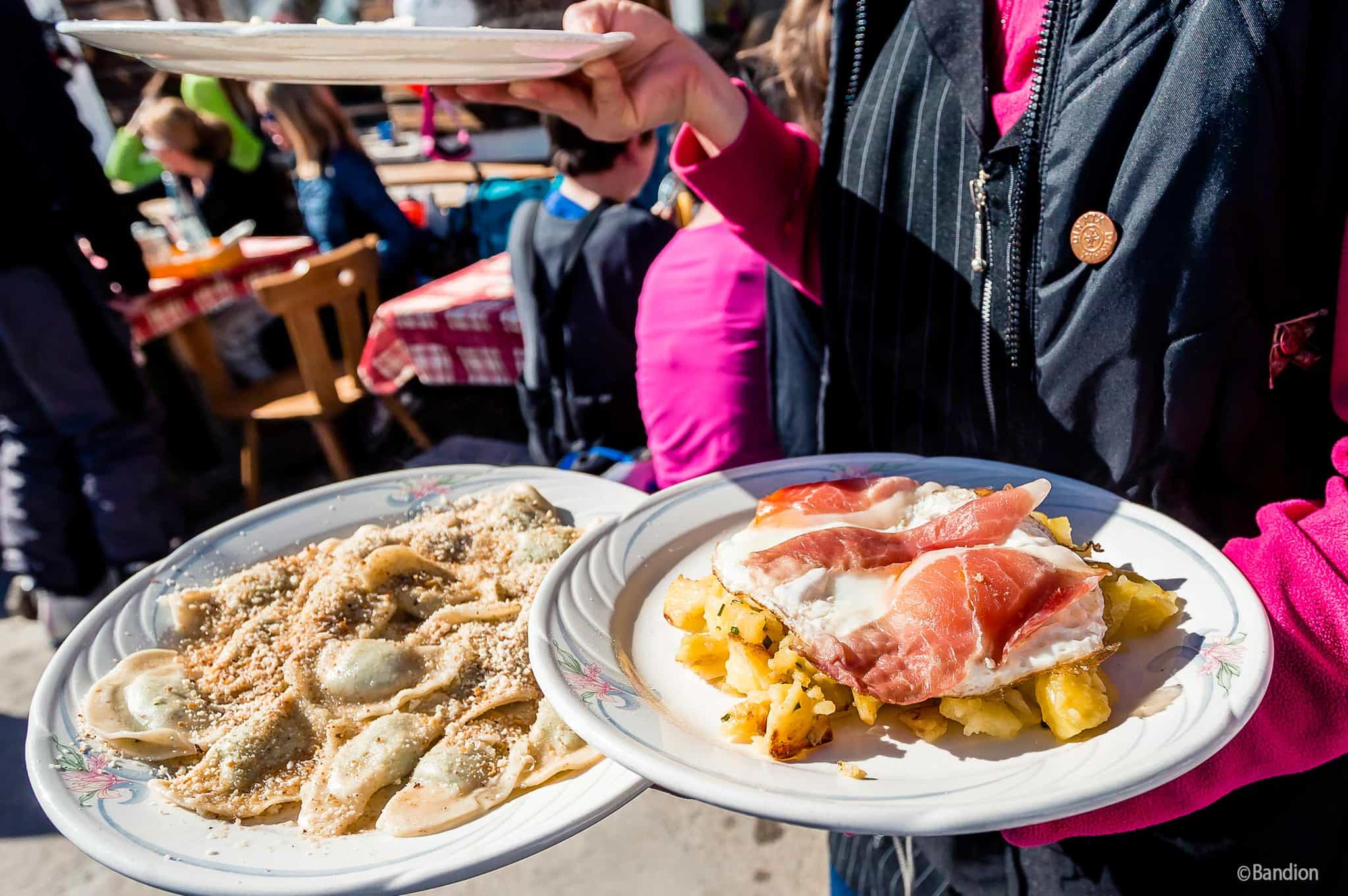
All breakfasts and dinners are included throughout your stay at Hotel Orso Grigio – a cosy 4-star alpine retreat known for its warm hospitality and hearty local cuisine. Expect traditional dishes that celebrate the flavours of the Dolomites, such as handmade tagliatelle with mushrooms, barley soup, canederli (bread dumplings with speck), polenta with wild mushrooms, and rich mountain cheeses. Each evening, return from the snowy trails to a delicious, home-cooked dinner at the hotel – the perfect way to round off the day. Lunches are not included, giving you the freedom to choose from a range of à la carte options at the scenic mountain huts you’ll stop at during your hikes. These huts offer everything from rustic sandwiches to hot alpine meals – and on one day, your guide can help arrange a packed picnic lunch (payable locally). We recommend budgeting around €20-30 per day to cover lunches, snacks and drinks.
Vegetarians, vegans, pescatarians, lactose intolerance and gluten intolerance can be provided for on this trip, though in some locations options may be more limited. If you have very specific dietary needs, we suggest bringing a few of your own favourite trail snacks to keep you fuelled on the go. Please note your dietary requirements on your passenger information form in your booking. Should you have other dietary restrictions or allergies you wish to check before booking, please contact the Much Better Customer Team for assistance.
What is the accommodation like?

Selva di Cadore
You’ll enjoy four nights at the charming Hotel Orso Grigio, a cosy 4-star alpine retreat located in the peaceful village of Pescul, nestled in the heart of Val Fiorentina. Surrounded by stunning views of Monte Pelmo and Monte Civetta, this family-run hotel seamlessly combines traditional mountain hospitality with modern comforts. With a centre-based stay, you can unpack once and return to a warm, inviting base each day – no need to worry about carrying or moving your luggage between locations. All twin-share rooms are en suite and feature warm wooden interiors, flat-screen TVs, Wi-Fi, safes, and thoughtful courtesy sets. After a day of outdoor adventures, you can unwind in the hotel’s intimate wellness centre, which includes a sauna, Turkish bath, and sensory showers. In the evenings, indulge in delicious included dinners that celebrate the region’s Ladin culinary traditions, served in the hotel’s cosy restaurant, renowned for its seasonal, home-style dishes.
Upgrades
Two solo room upgrades are available per departure and can be requested at the time of booking. Please refer to the Optional Extras section for info on pricing. As availability is limited, we recommend requesting your upgrade as early as possible. Once the two spots are taken, no additional solo upgrades can be offered.
This trip has been rated as Moderate
This trip is designed to be accessible to a wide range of participants, including those with no prior snowshoeing or winter hiking experience. However, it does require a moderate level of fitness and readiness for outdoor activities in a winter alpine environment. While the daily distances and elevation gains may seem manageable, the cold temperatures and unpredictable snow conditions can make the hike more challenging than anticipated. To ensure you get the most out of your adventure, being both physically and mentally prepared for a true winter experience will significantly enhance your enjoyment.
Each day typically runs from breakfast until early or mid-afternoon, with ample breaks to take in the breathtaking views, spot wildlife, and learn essential outdoor skills from your expert alpine guide. This isn’t just a snowshoe trek; the itinerary has been carefully designed to provide a fully immersive experience in the stunning Dolomites. Your local guide will offer fascinating briefings, sharing insights into the landscape, history, and wildlife. After each adventure-filled day, you’ll have plenty of downtime to relax and unwind at the hotel, allowing you to fully disconnect and recharge for the next day.
What if i need to skip an activity?
On Day 2, you have the option to shorten the hike to Rifugio Belvedere by using the cable cars (at an additional cost), which can make the hike more manageable if you need a lighter day and on Day 5 you can skip the short hike entirely by waiting at Rifugio Fedare. On the other days, there are no direct alternatives but your expert alpine guide will always adjust the routes and distances to match the group’s abilities, pace, and snow conditions. Safety is the top priority, and the guide will ensure that the route is suitable for everyone, taking into account any changes in weather and terrain.
What will I need to carry?
You’ll only need to carry in your pack the items for the day’s activities, including the avalanche safety equipment provided which you’ll receive training on how to use. Your guide will provide the gear and equipment based on the snow conditions on the trails at the time of your departure, so it's possible you'll be using just your hiking boots with snowshoes and/or crampons. Snowshoes are a special type of footwear that enables you to spread your weight over a larger area, allowing you to move easily across powdery snow-covered terrain. If you have never tried this activity before, don't worry! Snowshoeing is incredibly easy, comfortable and safe. You simply strap your snowshoe to the outside of your hiking boot and off you go!
The winter season in the Dolomites typically begins in early December and lasts through to late March, often extending into April at higher elevations. During this time, daytime temperatures usually range between -5°C and +5°C, although colder conditions are common—especially in the early mornings and at higher altitudes.
Despite the chill, the region enjoys a high number of clear, sunny days in winter; the Dolomites are known as the sunny side of the Alps. However, due to the ongoing effects of climate change, snowfall cannot be guaranteed and conditions may vary from year to year. Regardless of snow cover, the Dolomites remain spectacular in winter, with dramatic peaks, peaceful trails, and crisp alpine air.
Please note that mountain weather can change quickly. On any given day—especially when hiking above 1500m - it’s possible to experience sunshine, snow, wind and sleet within just a few hours. For this reason, we recommend packing several warm, waterproof and breathable layers, including gloves, a hat, and thermal base layers, so you can adapt to changing conditions and stay comfortable throughout the day.
We’re still waiting to collect any reviews from other travellers on this trip. However, all our hosts go through an extensive vetting process to ensure that your adventure is awesome.
Itinerary Activities
- Guided snowshoe hike Rifugio Belvedere (2082m)
- Guided snowshoe hike through the forests of Andraz and to Passo Sief
- Guided snowshoe hike through Valfredda and Fuciade
- Guided ridge hike beneath the peaks of Passo Giau
Guides
- An expert, local, English-speaking Alpine guide
Accommodation
- 4 nights in a comfortable, family-run, 4-star hotel with a wellness centre
Meals
- 4 alpine breakfasts
- 4 hearty Tyrolese dinners
Transfers
- Group arrival transfer from Venice Airport on Day 1
- Group departure transfer to Venice Airport on Day 5
- Transfers during the trip
Equipment
- Snowshoes and/or flexible-crampons/microspikes
- Trekking poles
- Avalanche safety equipment (transceiver, shovel and probe)
Our trips are hassle-free by design. We include all the activities and equipment, as well as many of the meals, so you can simply rock up with your rucksack and share the adventure with your new pals.
Travel to and from the trip
Our trips do not include flights, trains or other travel to the start point and back from the end point.
Tips
Tips are not included in the trip cost. These are entirely at your discretion but there is an expectation to tip for good service. Your host can help with advice, however we suggest the below as a guideline per person:
€20 per person, per trip
Of course, you are free to tip more or less, and the amount should be reflective of your perception of service and quality – a tip is not compulsory and should only be given when you receive excellent service.
Travel insurance
Travel insurance is compulsory for all of our adventures, and you'll need to provide your policy details before departure. Your insurance should offer adequate cover for overseas medical treatment, evacuation/repatriation, your baggage and equipment, and the specific activities involved in your adventure. We also recommend ensuring your policy includes cancellation and curtailment cover, in case you're unable to join your trip due to unforeseen circumstances such as illness.
Standard travel insurance may not cover all the activities included in your adventure, so it's essential to check the details carefully. There are adventure-specific providers that many travellers have used in the past, such as True Traveller (for those based in the UK or Europe), or Rise + Shield, both of which offer cover for a wide range of adventurous activities.
Please make sure your chosen policy meets your individual needs and covers all aspects of your trip.
Visas
Visa requirements often change, and you are responsible for obtaining any required visas for this trip. Please check with your nearest embassy or consulate for up-to-date advice.
Personal Expenses
You know your own spending habits best, so please budget an appropriate amount for things like optional meals and drinks, shopping, optional activities, and laundry.
What's included?
- Snowshoes, poles and/or flexible-crampons/microspikes if required (depending on the snow conditions at the time of departure)
- Shovel, probe, avalanche transceiver (compulsory for each participant, as per local regulations)
What do I need to bring?
BAGS
- Small cabin luggage or duffel bag
- Daypack (approx.30 liters)
- Waterproof liner/drybags for keeping the contents of your pack dry
CLOTHES
- Rain/windproof (Gore-Tex) jacket with hood
- Rain/windproof (Gore-Tex) trousers (we recommend either a combination of a thermal layer and a waterproof hard shell trouser, or insulated waterproof skiing pants)
- Fleece jacket or similar
- Thermals (merino best)
- One or two functional shirts (we recommend merino or synthetic)
- Warm hat
- Warm waterproof gloves, with liners
- Buff or neckscarf
- Trekking trousers/shorts/skirts
- Underwear and one or two layers of socks (merino or synthetic)
- Sunglasses (cat 3 lenses or higher recommended, suitable for bright conditions)
- Snow goggles (recommended, for bad weather conditions)
- Sleepwear
- Swimwear and fli flp flops (for the wellness centre)
- Comfortable, 3-season, waterproof hiking boots (above ankle essential) and not rigid 4-season boots. Strictly no trainers for hiking or snowshoeing, regardless of snow conditions. You can read more about crampons and selecting the right boots here
- A pair of comfortable shoes for the evenings
OTHER
- Universal travel plug adapter
- Power bank or solar charger (optional)
- Passports (and visas)
- Travel insurance documents
- Ear plugs
- Suncream (SPF30+ recommended) and lip balm
- Personal first-aid kit (inc. blister treatment)
- Personal items (biodegradable toiletries, sanitary wear etc)
- Alcohol hand-gel
- Reusable water bottle 2 x 1 litre
- Energy bars and snacks - read our article on Best Hiking Snacks
Optional Solo Room Upgrade (4 nights at Hotel Orso Grigio)
Payable Before Departure
Optional Solo Room Upgrade (4 nights at Hotel Orso Grigio)
…
Optional Solo Room Upgrade (4 nights at Hotel Orso Grigio) - February Departures
Payable Before Departure
Optional Solo Room Upgrade (4 nights at Hotel Orso Grigio) - February Departures
…
We partner with the World Land Trust to ensure this trip achieves Net-Zero emissions. We also support their Buy an Acre programme, helping local communities to buy and protect natural habitats in perpetuity.
What's the number?
It works out on average at 157kg of CO2 emissions per person, including all local transport, accommodation, food, activities, guides, staff and office operations.
The only thing it doesn’t include right now is flights and travel to the destination. We do make an overall estimate across all our customers separately, but as we don’t book flights, have customers from all corners of the world, and no way of reliably knowing their travel plans, we simply can’t include an individual number in the figure on display here. We’ve got a goal to fix that, so that when you book, there is a way to measure and mitigate the carbon emitted by your flight too.
But what does the number mean?
Yep, hard to picture eh? To give you an idea:
- Driving 1000 miles/1609km would be approximately 281kg of CO2 in an average car (or 140.5kg per person, if there were two of you in it).
- A return economy class flight between London and New York would be approximately 1619kg (1.66 tonnes) per person.
- 10 trees in a temperate forest are estimated to remove approximately 250kg of CO2 from the air in a period of 5-10 years.
What are we doing about it?
Our trips are relatively low-carbon by design, and we're working with all our hosts to develop long term carbon reduction plans. We partner with the World Land Trust to ensure this trip achieves Net-Zero emissions. We also support their Buy an Acre programme, helping local communities to buy and protect natural habitats in perpetuity, ensuring the protection of the reserve and its wildlife.
Want to know more?
Amazingly, no international travel company has ever publicly published their carbon measurements before, as far as we know. We believe that must change, quickly. So we’re openly sharing the method we used in the hope that other companies will be able to more easily follow suit and build on what we've done so far. You'll find it all here.
This will very much depend on the snow conditions at the time of travel. Between January and April, the Dolomites are usually covered in snow. If snow is present, all hikes will take place using snowshoes and poles. Your guide will provide the gear and equipment based on the snow conditions on the trails at the time of your departure, so it’s possible you’ll be using just your hiking boots, snowshoes, or crampons.
Snowshoes are a special type of footwear that enables you to spread your weight over a larger area, allowing you to move easily across powdery snow-covered terrain. If you have never tried this activity before, don’t worry! Snowshoeing is incredibly easy, comfortable, and safe. You simply clip your snowshoe to the outside of your hiking boot and off you go. You’ll be in the hands of experienced and trained local guides who know the area intimately, and who will guide you safely throughout the hike.
The local tap water is safe to drink. Please bring along your own reusable water bottles (at least 1.5l) to fill up at the mountain huts to avoid buying single-use plastic bottles.
As this is a centre-based trip, you’ll return to the same hotel each night, meaning you’ll have daily access to your main luggage and only need to carry a small daypack with your essentials during the hikes. Please note that luggage space in the transfer vehicles is limited, so we recommend travelling with hand luggage only (suitable for cabin storage on planes). If you do plan to bring additional or oversized baggage, please inform the host in advance, as special arrangements or a luggage deposit may be required.
Marta Marinelli, raised in Italy’s serene Prosecco Hills, dreamt of global adventures, inspired by her father's travel stories. Her passion evolved into a career, backed by a decade of studies including degrees in international tourism and destination management. She’s worked in the adventure travel sector since 2012, living in Italy, the UK, and now sunny Portugal.
Over twenty years, Marta has explored over 55 countries, visiting remote areas like Ghana, Rwanda, Sao Tome and Principe, Haiti and Nepal’s Upper Mustang region. As a Senior Adventure Expansion Manager at Much Better Adventures, she focuses on creating life-changing experiences, ranging from multi-activity adventures, challenging treks to ultimate adventures in iconic places. She loves the challenge of finding the best local adventure hosts around the world, collaborating on adventures that offer genuine immersion, pushing beyond the beaten path and working on exclusive itineraries that challenge your comfort zone.
What makes her tick? Enabling people to live adventure-rich lives while positively impacting and empowering local communities around the world, generating sustainable opportunities for both the host, guides, community, and the environment.
You'll be accompanied by a local, expert, qualified Alpine guide, leading a group of just ten trekkers maximum. You will meet your guide on the morning of Day 2 of the trip. However, your host will provide you with all the details and info you need to meet your group for dinner at the hotel on Day 1. A WhatsApp group will also be created ahead of departure to facilitate communication.
If poor weather sets in (such as snowstorms or poor visibility), depending on the stage of the trek, your host will consider the conditions and plot an alternative route, which may involve sitting out any extreme weather in one of the huts. This is an unlikely event, but your hosts are experienced mountain guides with a lot of successful treks in this part of the world under their belt, so you are in safe hands.
This trip includes locations or elevations where conditions can be extremely cold. Daytime temperatures may drop below freezing (0°C/32°F), and nights are often significantly colder. These conditions can affect physical performance and increase the risk of exposure-related issues, such as frostbite or hypothermia.
Your guide is trained to manage these risks, adapting activity intensity and monitoring group wellbeing. However, it's important to take personal responsibility – bringing the right cold-weather gear (see Kit List), staying hydrated and well-nourished, and recognising early signs of cold stress.
We recommend assessing your personal comfort and resilience in cold environments, and consulting a medical professional if you have health conditions that may be affected. Arriving early can also help you acclimatise to the colder conditions, especially if you're coming from a much warmer climate.
Sure can! Over 70% of our travellers travel solo, it’s a great way to meet like-minded people.
Our team of Adventure Hunters co-create exclusive adventures which are run by highly vetted, specialist hosts. The trip is run by our trusted host partner in the destination. We only work with independent, local, in-destination experts who know the very best places to explore and how to stay safe. Read more information about the local teams we partner with. You’ll be introduced to the host straight after making a booking via the Much Better Adventures platform.
Much Better Adventures refer to the UK Government’s official travel advice when designing trips and monitoring trip operations. We recommend that all customers are familiar with the practical information provided on the Government’s FCDO website, where current travel advice can be found by searching for the applicable destination(s).
For customers joining this trip from other international destinations – please also read the official travel advice applicable to your country of residence/origin, as this may differ.
We recommend checking out the country-specific information and also talking to a travel nurse.
We automatically convert prices from the local currency that a host receives to your chosen currency. We update our exchange rates on a daily basis so this does mean that prices displayed on the site are subject to currency fluctuations, which is why you may see them change over time.
If you wish to change the currency you pay in, head to the bottom of the page.
All of our group adventures are specially designed for adults to enjoy as we want these adventures to bring together outdoorsy people who are truly like-minded. You must be over 18 to join one of our trips.
You're always in good company on one of our adventures.
Our trips are typically made up of a mixture of solo travellers and small groups of 2 or 3 friends, with most in their 30s-50s.
Our sociable adventures are solo-friendly by design and naturally attract outdoorsy people with a shared mindset; a love for adventure, a desire to push themselves and meet awesome, like-minded people along the way. Check out our Community Values – a shared code to make sure that everyone's experience is safe, inclusive and brilliantly unforgettable.
It’s this camaraderie that has so often turned a great adventure into a life-changing one.
Don't just take our word for it:
- 95% of people rate the group dynamics on our trips 5/5
- 90% of people recommend joining a trip to make new friends
- 75% of people have met people on our trips that they would now consider friends
See here for more info about the Much Better Adventures tribe.
No Reviews yet
This trip is brand new
We’re still waiting to collect any reviews from other travellers on this trip. However, all our hosts go through an extensive vetting process to ensure that your adventure is awesome.
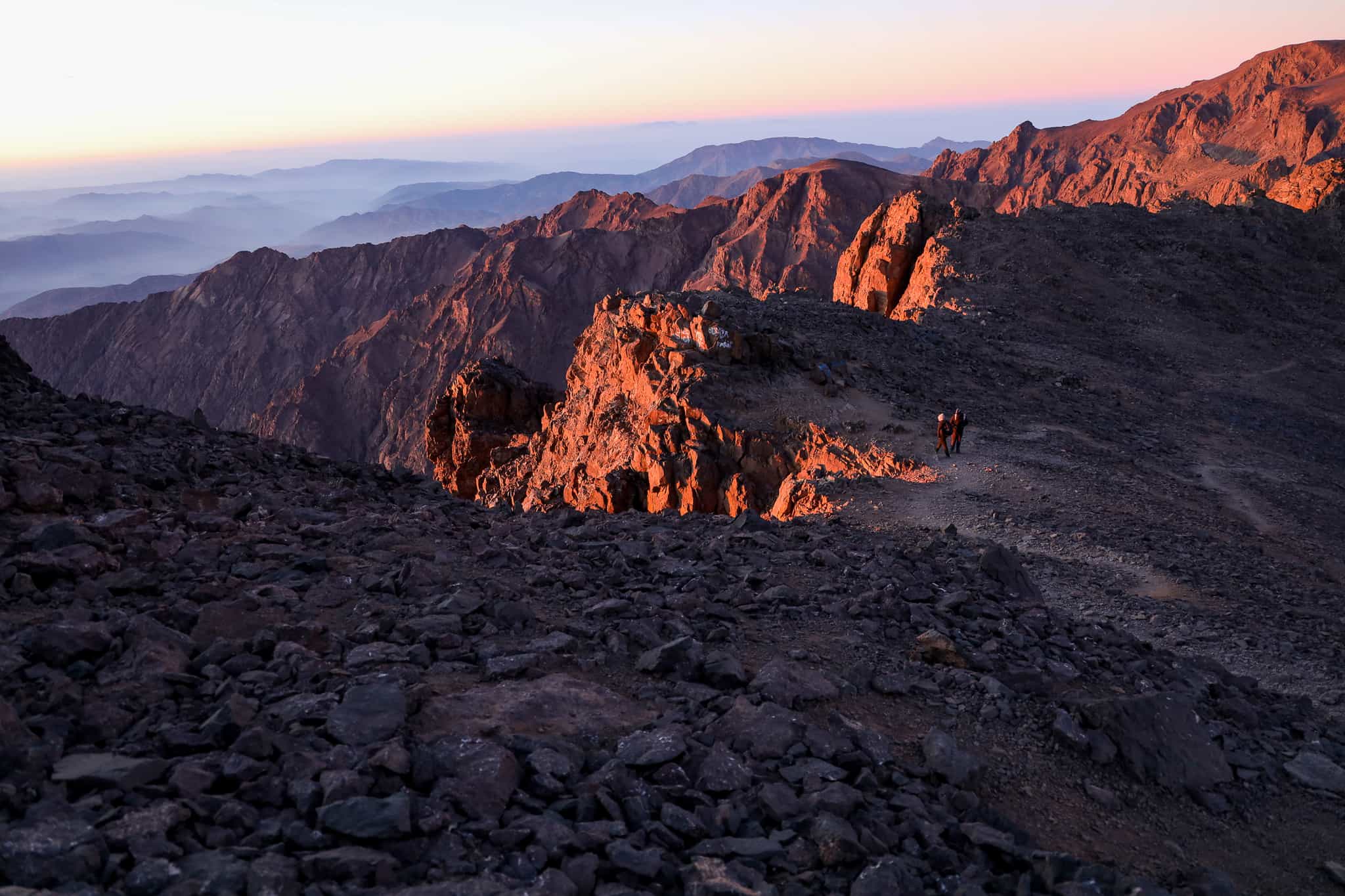
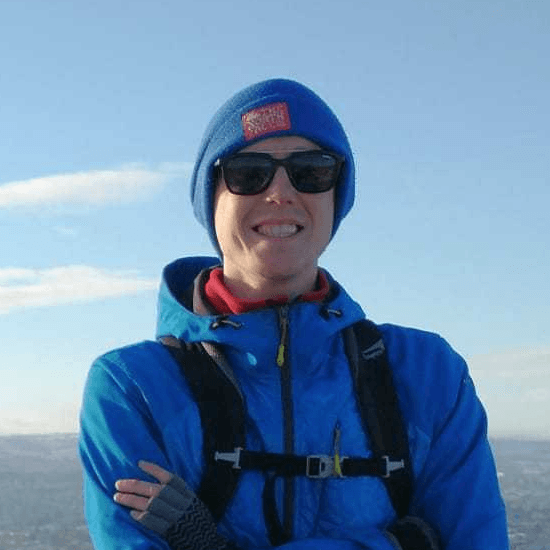
How fit do you need to be?
Every trip is different. Our friendly experts are here to help, whether it's about altitude, terrain, or recovering from injury.
We've got your back
Guaranteed to run
All Much Better Adventures trips are now guaranteed to run. Once you’ve booked your spot you can immediately make your travel arrangements, no uncertainty, no hanging about (excludes 'request to book' departures). Full details
Flexible payments
Secure your spot with the minimum deposit and pay off the remaining balance in as many instalments as you like, with no interest or fees. Full details
Happiness Guarantee
We’re so confident you’ll have an amazing time we’ll put our money on it. Full details
Full financial protection
To give you complete peace of mind Much Better Adventures is backed by ABTOT, ABTA and ATOL memberships. Full details
Tried & Trusted
Much Better Adventures is consistently rated ‘Excellent’ on Trustpilot with over 1000 verified trip reviews.
Connect before you go
You'll be invited to join a WhatsApp group to get to know each other before your big adventure together. Full details
DEPARTURE DATES
Saturday 10th January 2026
to Wednesday 14th January 2026
Fully Booked
Saturday 24th January 2026
to Wednesday 28th January 2026
Hurry; only 1 space left





